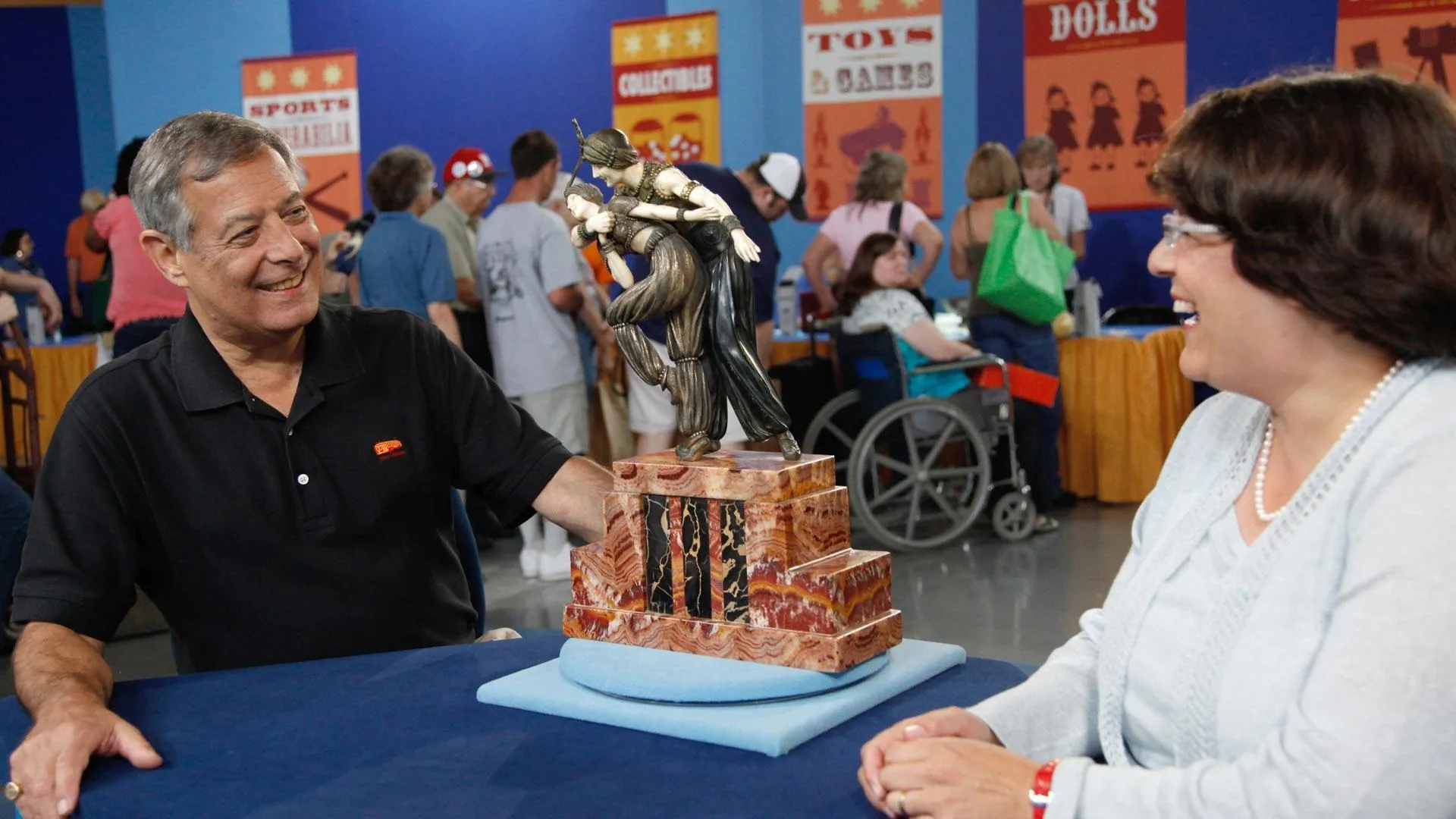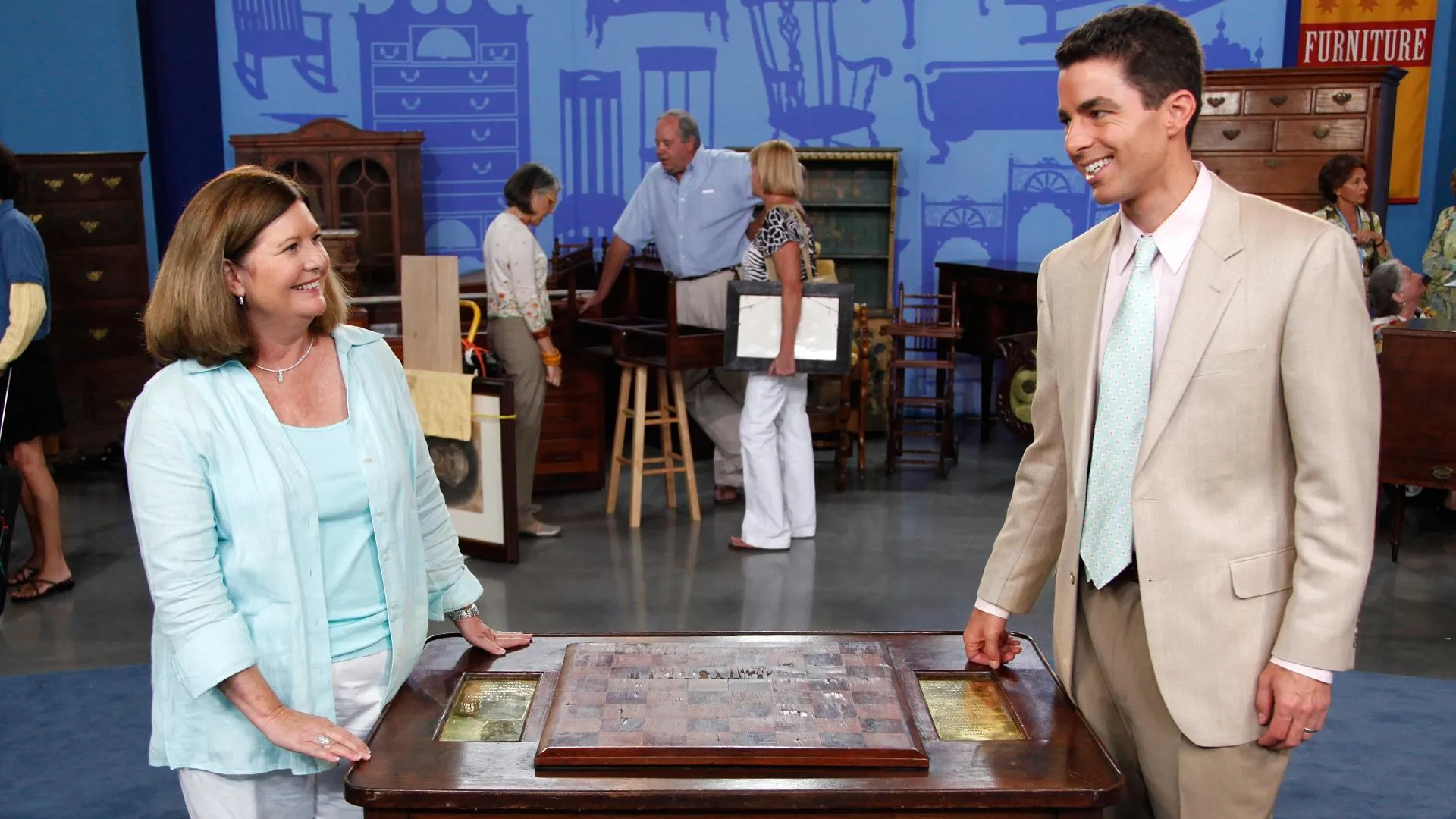HOST: When we were in Biloxi, we visited the Ohr-O'Keefe Museum, a place dedicated to the work of Mississippi artist George Ohr. Designed by famed architect Frank Gehry, the museum was rebuilt after Hurricane Katrina leveled it in 2005. Today, it stands as a celebration of the "Mad Potter of Biloxi." Expert David Rago was excited to show how even a vessel as common as a teapot was transformed by Ohr. David, George Ohr was certainly an artist for art's sake. And yet, like all artists, he still needed to make a living. So we see that he made vases and bowls and teapots. And why have you chosen teapots to discuss today?
APPRAISER: Well, George Ohr had a 25-year career, more or less, during which time he made about 10,000 pieces. But the one thing he made from start to finish were teapots. And we can look at these teapots and see the progression of his work as an artist.
HOST: Let's talk about this first one here. It looks to me to be a pretty traditional teapot.
APPRAISER: It is exactly that. It's an earlier piece. It has a lot more to do with where George Ohr came from than where he was going. The form is quite traditional, the spout is cast, the handle is pulled, the notching that goes around the circumference of the body is also a traditional decorative technique.
HOST: I notice when I look at it that the glaze on the lid is distinctly different than the rest of the teapot. Is that by choice?
APPRAISER: Not exactly. What happened when the Ohr collection was purchased in 1972 by Jim Carpenter, he brought everything up north from Biloxi. And in his haste to pack the pieces, he mixed the lids in one large box. And he tried to find the right vessel for them when he got back to New Jersey. About half of the pots I've seen have lids that probably didn't come with them originally. And it's pretty much been accepted by contemporary collectors that it's okay. As long as it fits, it's all right. If one came up at auction today, a similar teapot would be somewhere between $6,000 and $9,000.
HOST: Now, the second piece that you've chosen for us to look at today looks more like a relic than a piece of art.
APPRAISER: Well, actually, it's a little bit of both. In the great Biloxi fire of 1894, when George Ohr's pottery and much of Biloxi burnt to the ground, Ohr went and scavenged through the ruin site and found these pieces that were left from his pottery, and he called them his Burnt Babies.
HOST: And so this obviously has the damage from that fire. Does that add or detract from the value? Does it have value to collectors?
APPRAISER: It has value to collectors, certainly in several ways. Number one, it is part of that design continuum. And if you want to express that in your collecting of George Ohr and/or his teapots, you'll want to have this piece. I think more importantly, these burnt pieces mark a departure point from before George Ohr's fire here in Biloxi to his work after the fire. And like the phoenix, he rose from the ashes to create anew, because everything was gone at that point. And you could see George Ohr's work before the fire and Ohr's work after the fire, and he was a very different artist from that point on.
HOST: And we'll talk about that, but what would be the value of a similar Burnt Baby like this at auction?
APPRAISER: Certainly at auction, if you could find one, between $1,000 and $2,000, and probably more, in spite of the condition.
HOST: Now, you spoke about before the fire and after the fire, and here we have a teapot, I assume, that came after the fire.
APPRAISER: We can see Ohr's artistic expression all over this.
HOST: Absolutely.
APPRAISER: Much freer hand here. Now we have a teapot that's futuristic in form, it's compressed, it has a deep in-body twist, it's liquid. It's amazing the way he can manipulate the clay and make this happen. You still know it's a teapot, but this is something very modern. And I don't like to use the word "unique" often, but this is very much a unique piece of American decorative ceramic. I think with George Ohr we can use that word, and we haven't overused it.
HOST: There's what looks like a shard of pottery or a little price tag on that. What's that?
APPRAISER: That is actually an original price tag. George Ohr made these. He rolled out a piece of clay flat, he cut them with pinking shears, die-stamped his mark into the back, put a little hole so he could run a wire through it, and he would attach this to certain pieces of his pottery. And this is an original price tag which would have read somewhere around ten dollars. A similar one, since they're all so unique, but at auction would be somewhere between $20,000 and $30,000.
HOST: And does it help to have the price tag?
APPRAISER: It doesn't hurt.
HOST: Love hearing you talk passionately about George Ohr. Thanks so much for the information. It's great to be back in Biloxi.












